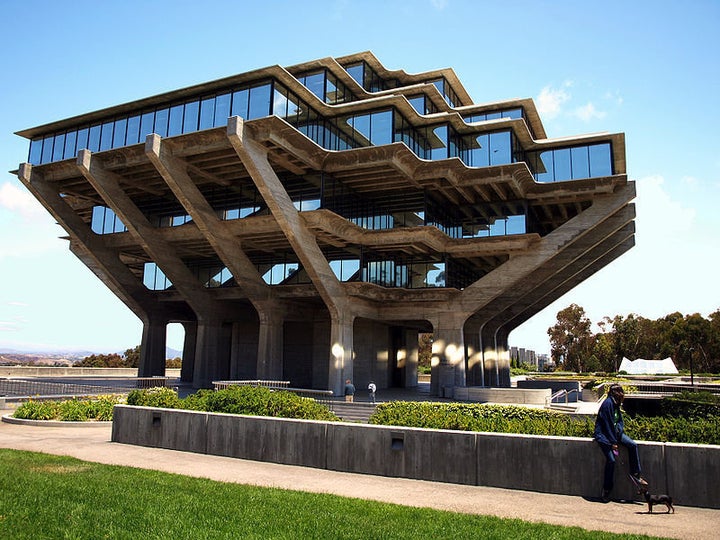
"The last historical act of writing may well have been the moment when, in the early seventies, Intel engineers laid out some dozen square meters of blueprint paper (64 square meters, in the case of the later 8086) in order to design the hardware architecture of their first integrated microprocessor."
In two articles on Library Spaces and their futures, we looked at contemporary tendencies in the design of Library Spaces, and past examples of Library Spaces and the landscapes that shaped their forms.
To address the reshaping of Library Spaces I would like to jump forward in time, into its imagined futures. Three main aspects stand out in sci-fi literature as micro-aspects of contemporary design desires as they relate to libraries:
. (What) Validation of information
. (Where)Re-trans-embodiment of information: Information Immersion Context
. (How) Spatialization of Knowledge: Knowledge, Learning, Production
Validation
Spam filters act as opening lines in many sci-fi books as objects of the post-advanced-information age. Doubt on source and the agency of information is a natural outcome of a broader awareness and accessibility by users to common repositories of information, as well as a shift of economic models that live, exploit and manufacture the information landscape. In Charles Stross' Accelerando, the introductions main character is a post-scarcity world ('venture altruist'), navigating space not only through -- still -- an economy of preferred accessibilities in a landscape of free goods and information, through a range of apparatuses that connect -- and disconnect -- him at will with the variables of such context and the spam and junk mail/ads that accompany such freedoms. The compulsion of this character to further help connect the dots between entities and the information they seek is a mirror of transforming political and social bodies in a time too fast for culture to install itself.
Re-trans-embodiment of information: Information Context
Bruce Sterling's Spime points are objects that contain their history, which they 'broadcast' and recombine by talking with each other. Information about 'something' is often found elsewhere, whilst the 'something' can simultaneously emit the different fields that the object encounters. Katherine Hayles brought us the shift in subjectivity, which was the outcome of dealing with disembodied information -- information which is abstract, not directly referent to an analogical body.
Though information has always changed the structure of its perceiving bodies, there are more opportunities for frequent reconfigurations of our bodies of knowledge. Examples are abound in the sciences with changes in categories and the invention of synthetic bodies. Questions of authority and power emerge from this situation, and those of pathology and cure quickly flow.
In Sci-Fi, time shear is often spatial -- decay, lack of update or conservation through time -- of habit and/or style -- are usually integrated in the spatial infrastructures of cities, or other aggregates of inhabitability and their noise. These infrastructures supposedly keep the flow of material and energy while different/slower than information. In Accelerando (Stross) we find entire civilizations facing the problem of continuity through mediums of storage for their 'uploadable' intelligences, focused on the danger of fading router reliability and protocols.
In Vernor Vinge's Rainbow's End, the Geisel Library undergoes a radical digitization project that destroys the books themselves, flash-mobilizing political factions that disturb the historical event before it happens -- within a space that can no longer be seen without a wearable overlaying of reality's deeper and changing complexities, requiring decoding layers of meaning out of discordant points of view.
Spatialization of Knowledge: Information Immersion Context: Knowledge and Learning
A frequent figure in sci-fi is the advanced user interface (UI) or heads up display (HUD). On the one hand, there is a pointing at the continuing need of information and knowledge to be generated or run in collaboration with humans, while on the other hand is increasingly not relying on them for the computing of certain complex processes. Digital libraries and searchable content change formats of their distributing industries and quickly spill over into content. An example is the content-format of a thesis protocol, which allows for the retracing of steps of an immersion journey into often unrelated and distant content -- compressing the space of embodiment and opening a new body of relationships. These will shift to updated needs of embodiment -- regarding specificity of the embodying entity (customization) and probability of future use (hyper-polyglotism-platform-variant). Creative Commons Licenses, Copy-Left, and Open Source further suggests accelerations of these processes on a legal level.
In Vinge's Rainbow's End, all characters belong to continuous education programs that keep individuals updates with rapidly changing technologies. Programs that practice how to creatively think of 'Search and Analysis,' to be able to navigate with 'wearables,' the indispensable advanced perception apparatus which gives access to real reality.
In Peter Watts' Blindgsight, 'ConSensus' is a computing-UI that integrates, synthesizes and creates new information from databases and environmental analysis, moving and popping up alongside the characters. Different than a search engine, it is nearer to the ambitions that helped model the answer-engine 'Alpha' (link), the Computational Knowledge Engine launched in 2009 by Stephen Wolfram, which computes new data (answers) from other available sets.
Information Visualization is barely scratching the surface of this. However, Kittler -- who passed away this Oct. 18th, 2011 -- claimed that no real significant changes happen to media and, therefore, also to the cultures around it unless a significant 'hardware' shift happens. After microprocessors, only quantum computing could have such a reach -- "what we write in" is key in the real profound shifts of culture.
Carla Leitão is an architect, designer and writer currently living, working and teaching Architecture in New York. Practice and academic works interests in ubiquity and intersection of new media and architecture.
http://www.aumstudio.org
http://www.ubiroom.net
Research Assistant: Benjamin Rice